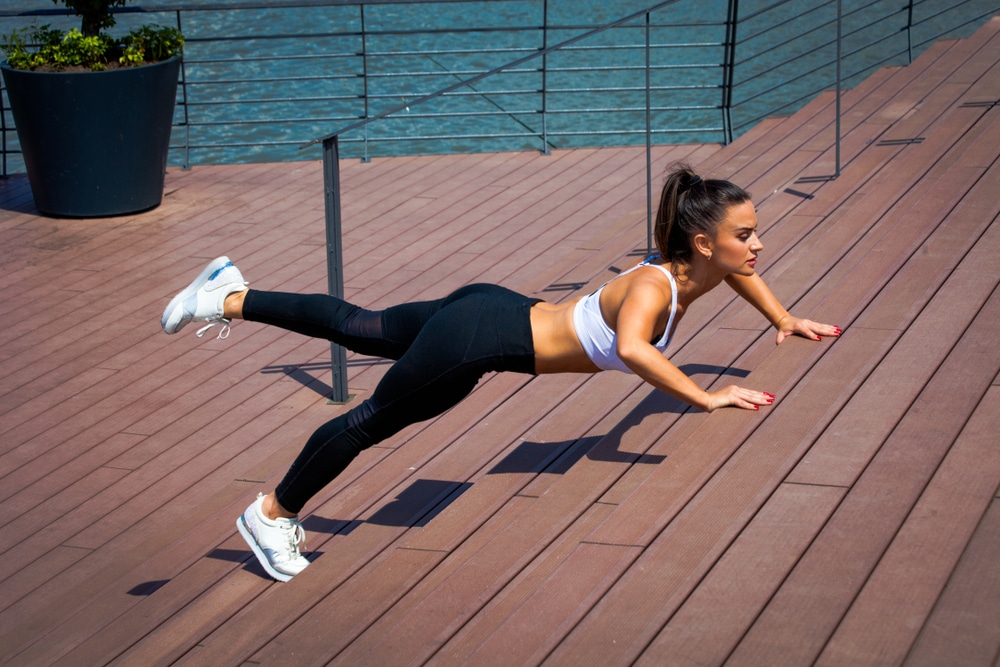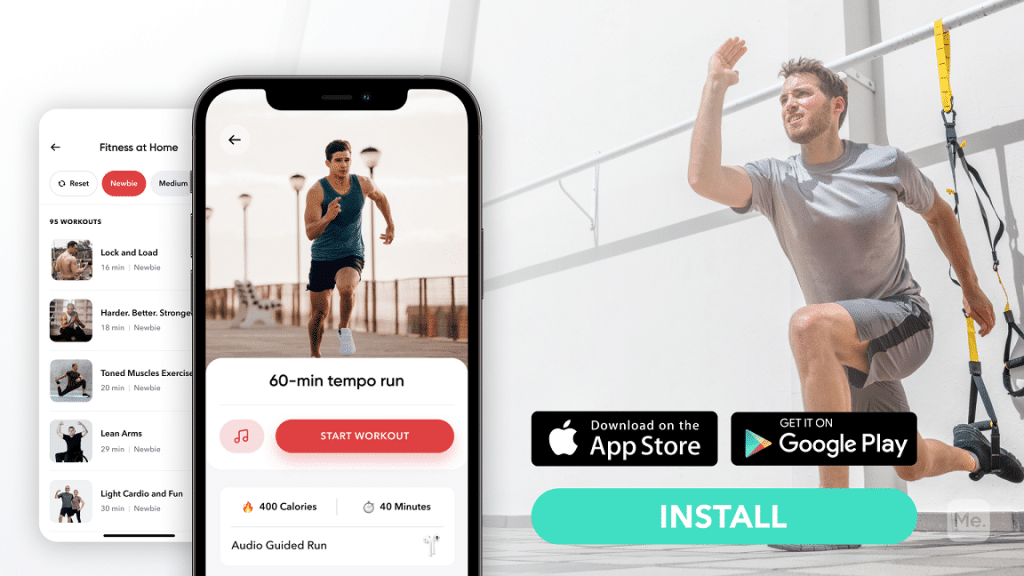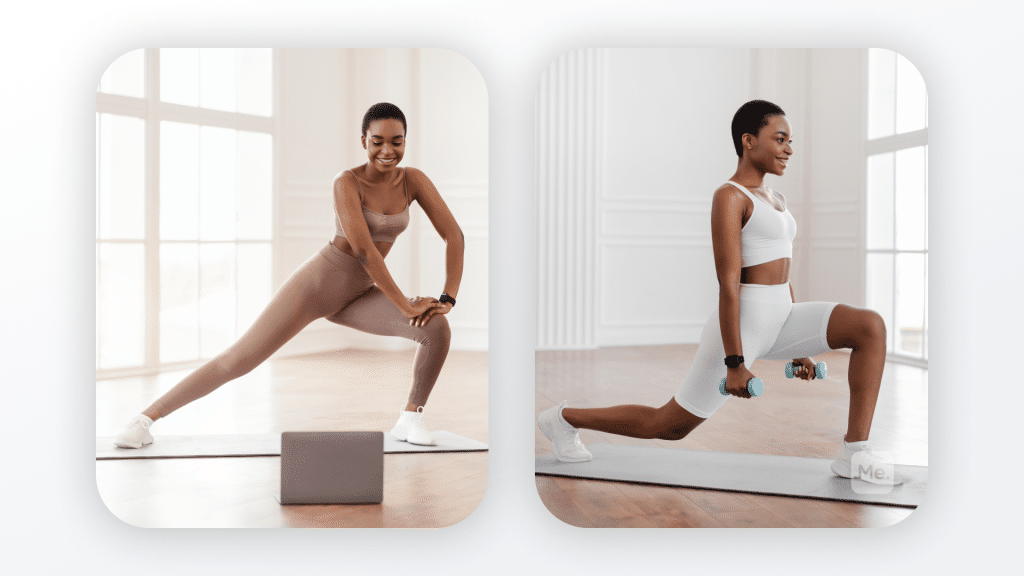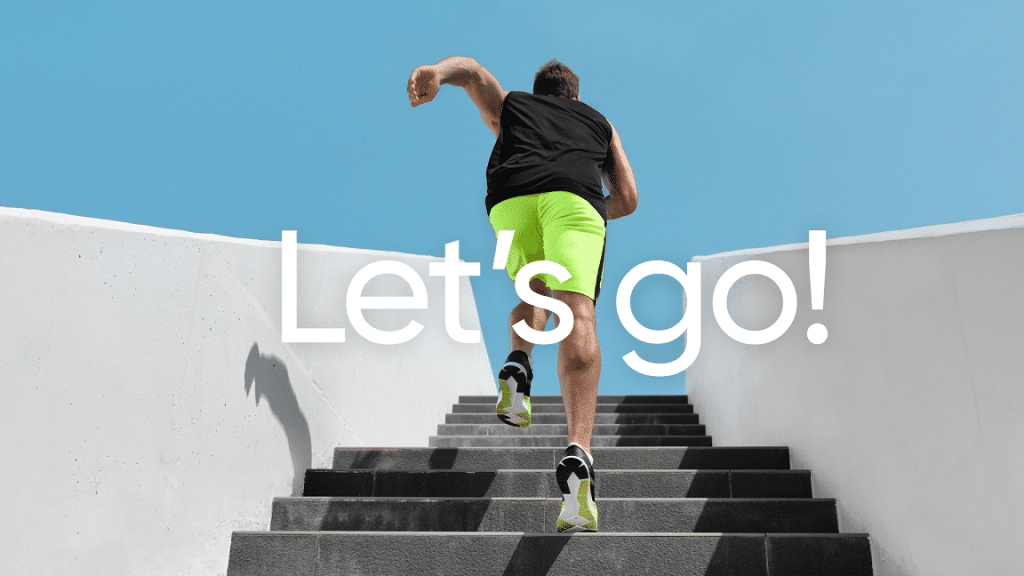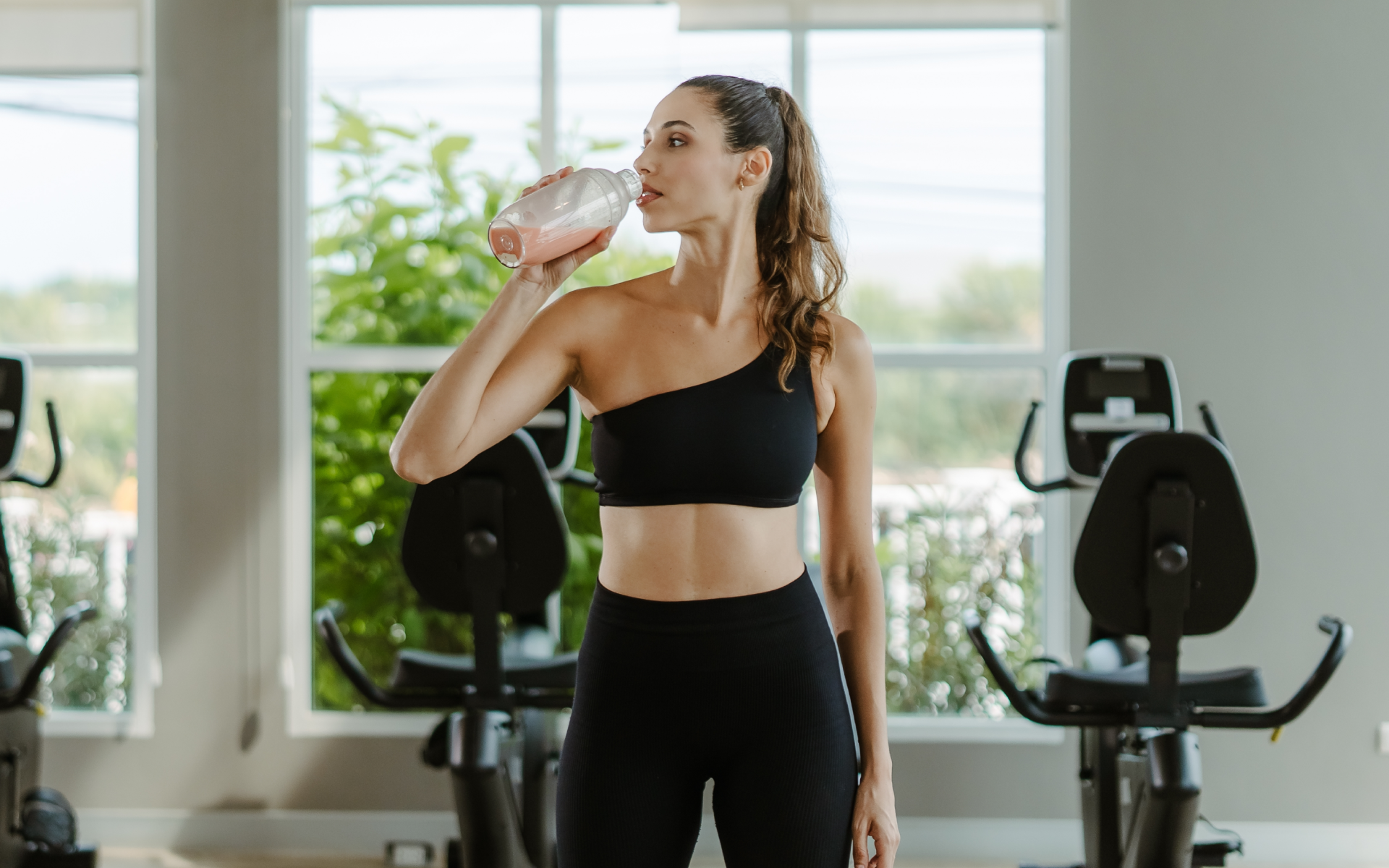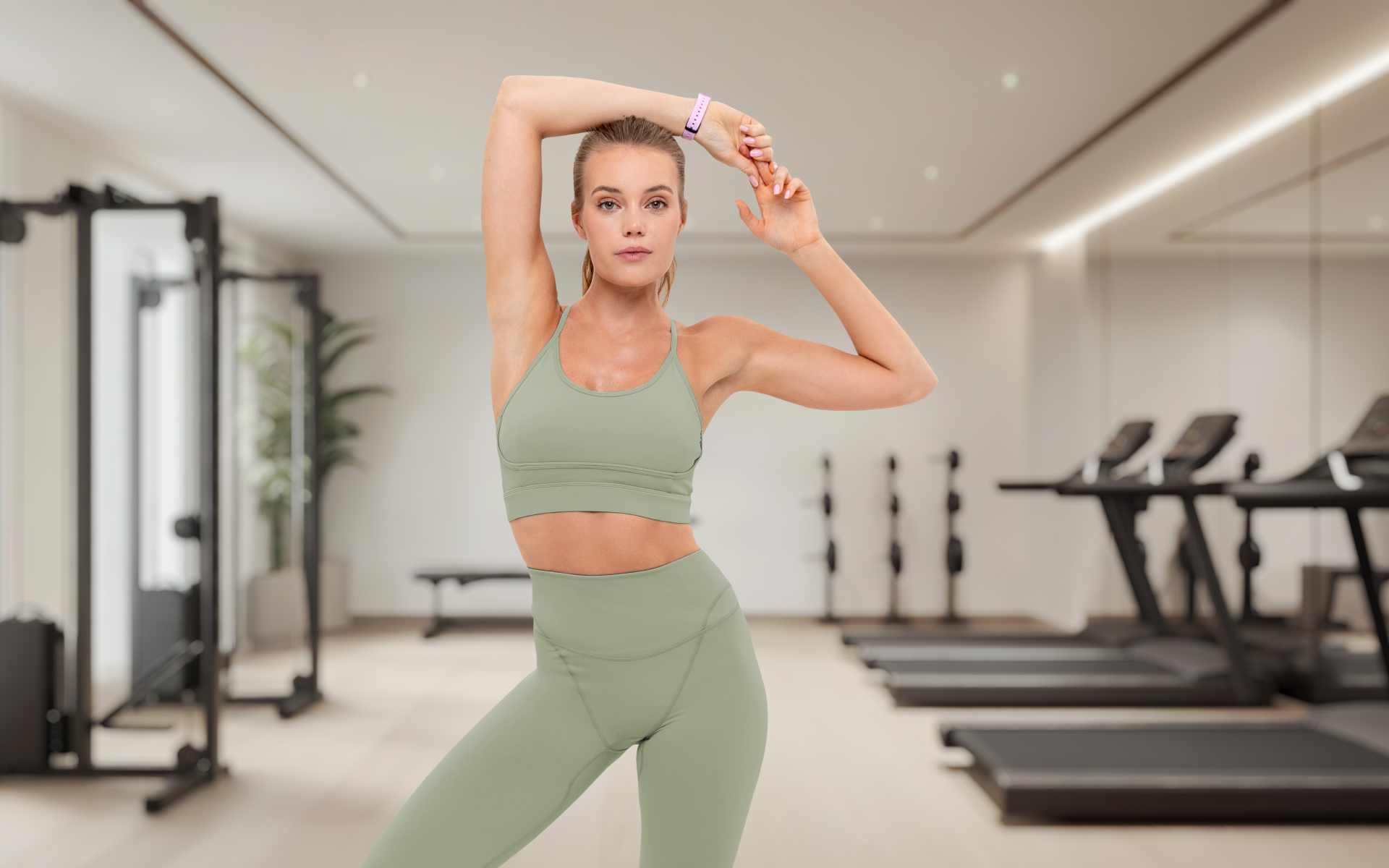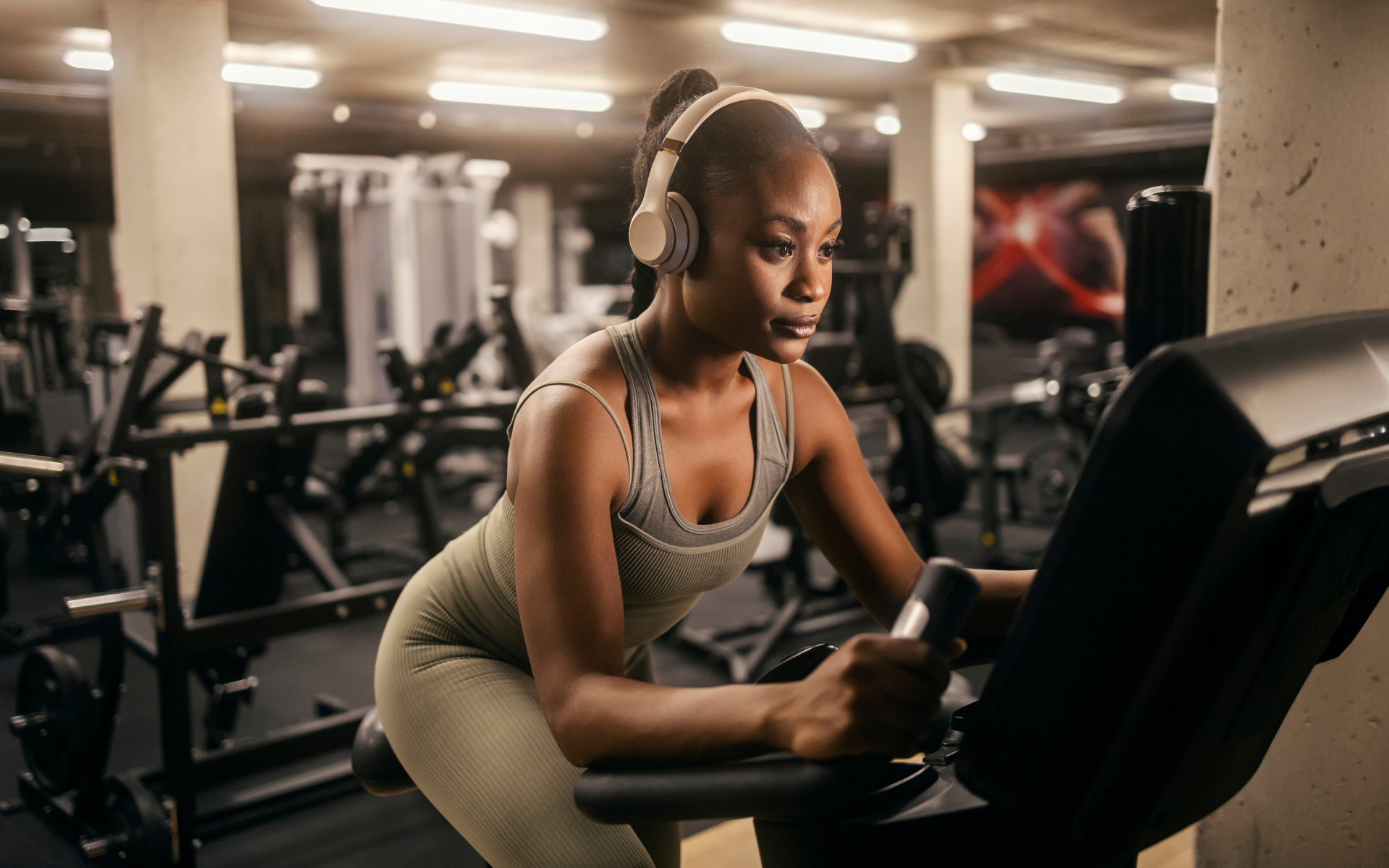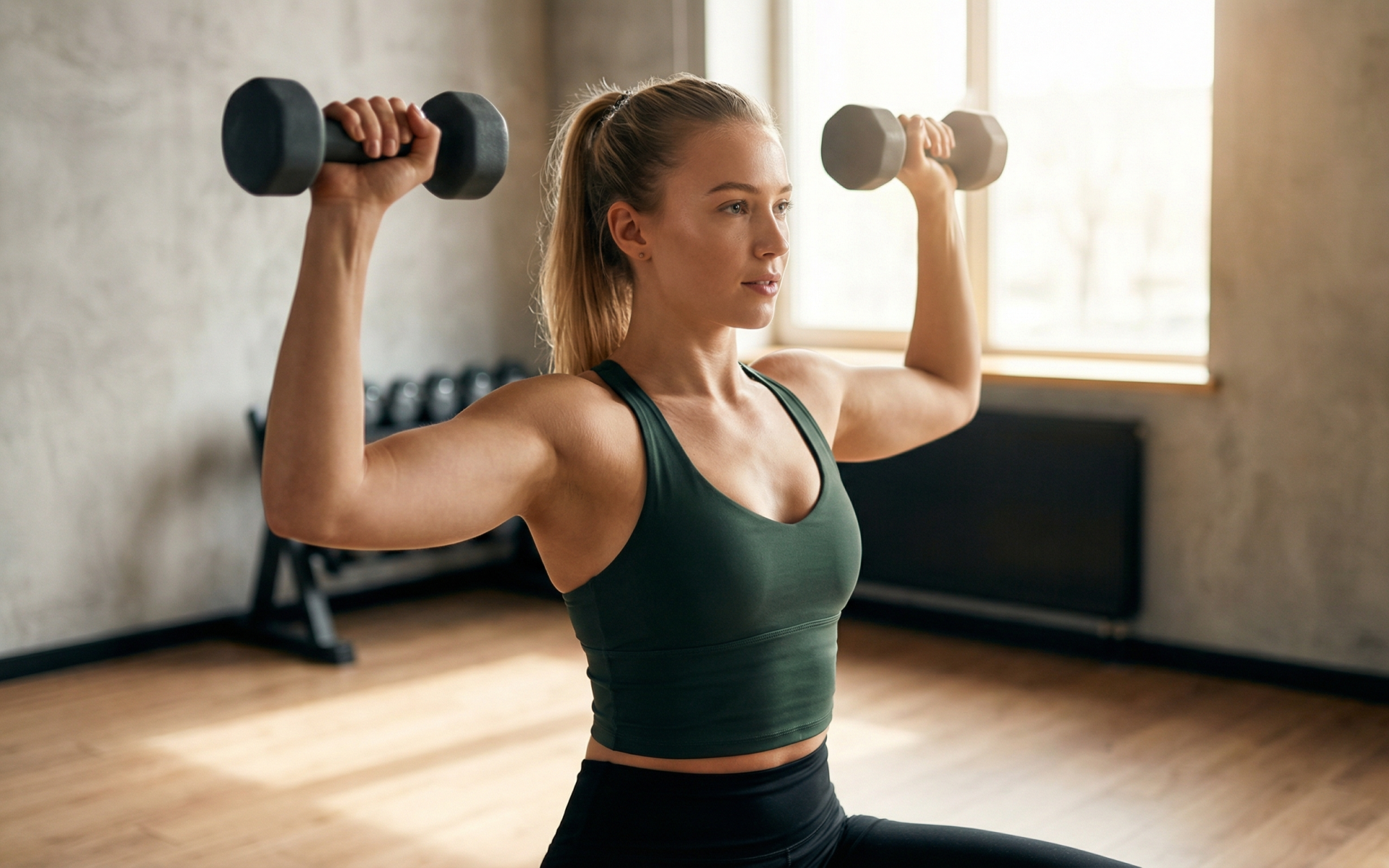Does the thought of going up a flight of stairs make you dread the gym? If so, you’re not alone. But, what if we told you that by adding a stairs workout to your routine you could tone your legs and butt, while also getting your heart rate up? The muscles that are worked in a stair workout depend on how you position your body and which muscles you use to power through the move. For example, when you place your body weight on your heels and use your glutes and hamstrings to drive the stairs, meaning that you’ll work those muscles more than if you were to stay on your toes and use your quads. These benefits aren’t reserved for the stairmaster—plain old stairs will do the trick. And, if you want to make your stair workout even more effective, read on.
Get your personalized
meal plan!
What Muscles Does Climbing Stairs Workout?
The following muscles are targeted by a stair workout:
Gluteus Maximus
The gluteus maximus is the largest muscle in the body and is responsible for extending the hip (3). Most people know it as the muscle that makes up the buttocks.
Aside from aesthetic reasons, working out this muscle is important for preventing lower back pain and knee injuries. This is because it’s one of the dominant muscles in the posterior chain.
Your posterior chain includes all the muscles that run down the back of your body, from your traps and lats all the way down to your glutes.
Quadriceps
The quadriceps are a group of four muscles located on the front of the thigh. They’re responsible for extending the knee.
A strong quadriceps muscle will help to stabilize the knee joint and reduce the risk of knee injuries (6).
Hamstrings
Think of your hamstrings as the opposite of your quadriceps. Whereas the quads extend the knee, the hamstrings flex the knee. The hamstrings are located at the back of the thigh and are made up of three muscles: the semitendinosus, semimembranosus, and biceps femoris (4).
The hamstrings play an important role in many activities, such as walking, running, and jumping.
Calf Muscles
The calf muscles are located on the back of the lower leg. They’re responsible for plantar flexing of the foot, which is pointing your toes downwards (2).
Strong calf muscles are important for balance and stability. They also help to absorb impact when you walk or run.
Hip Flexors
Your hip flexors are a group of muscles that attach your pelvis to your femur (thigh bone). They’re responsible for flexing the hip, which is bringing your knee up towards your chest (5).
Strong hip flexors are important for activities such as sprinting and kicking. They also help to stabilize the pelvis and lower back.
Read More: Active Rest Day Benefits, Workouts, And Diet
Abdominal Muscles
Looking to have a set of six-pack abs? Then you’ll need to work on your abdominal muscles.
There are four main muscles in the abdominal region: the rectus abdominis, external obliques, internal obliques, and transverse abdominis (1).
The rectus abdominis is the muscle that makes up the “six-pack.” The external and internal obliques are located on the sides of the abdomen and are responsible for twisting and bending the trunk. The transverse abdominis is located deep within the abdominal region and helps to stabilize the spine.
Sample Stair Workout
If you’re new to stair workouts, start with a simple routine like the one below. Once you’ve got the hang of it, you can add more difficult exercises to your routine.
Perform 3 rounds of this workout, with 1-minute rest in between each round.
The RPE scale is a measure of perceived exertion. 6 is easy, 8 is moderate, 10 is hard, and 12 is an all-out effort.
- Slow climb at 3–4 RPE for 45 seconds.
- Double step at 3–4 RPE for 25 seconds.
- Slow climb for 45 seconds.
- Sidestep at 3–4 RPE for 30 seconds on each side
- Sprint at 7-8 RPE for 10 seconds.
- Slow climb for 45 seconds.
Stair Climber Benefits For Health And Fitness
Aside from building and toning muscle, stair workouts have several other benefits for health and fitness.
Cardiovascular Health
Cardiovascular exercise is any exercise that gets your heart rate up and keeps it up for an extended period. This type of exercise is important for heart health and can help to reduce the risk of heart disease (10).
Climbing stairs is a great form of cardiovascular exercise. Depending on the intensity, stair workouts can burn a lot of calories and get your heart rate up.
Weight Loss
If you’re looking to lose weight, then stair workouts can be an effective addition to your exercise routine. This is because they can help to increase your metabolic rate and burn more calories (8).
Stair workouts are also a great way to tone your muscles, which can help to boost your metabolism even further.
Improved Lung Function
Climbing stairs is a great way to improve your lung function. This is because it’s a weight-bearing exercise, which means that it requires you to use your muscles to lift your body against gravity.
This type of exercise can help to increase your lung capacity and improve your respiratory function. In patients with chronic obstructive pulmonary disorder, stair-climbing is a safe method that is used to assess lung function in patients post medical interventions (12).
BetterMe app will kick you out of the mental funk, shake off your extra weight, rid you off your energy-zapping habits, and help you sculpt the body of your dreams. Intrigued? Hurry up and change your life for the better!
Improved Balance And Coordination
Stair workouts can also help to improve your balance and coordination (9). This is because they require you to use both your upper and lower body muscles to move.
This type of exercise can also help to improve your proprioception, which is your ability to sense the position of your body in space.
Low Impact Exercise
Stair workouts are a great form of low-impact exercise. This means that they don’t put as much stress on your joints and muscles as higher impact activities like running.
This makes stair workouts a great option for people with joint problems or injuries.
Bone Strength
Because stair workouts are a weight-bearing exercise, they can help to improve bone density and reduce the risk of osteoporosis (13).
How To Make Your Stair Workout More Effective?
Here are a few tips to make your stair workout more effective:
Maintain Proper Form
Proper form is essential for targeting the right muscles and reducing the risk of injury. When climbing stairs, be sure to land on your heel first and roll through to your toe.
Keep your trunk upright and avoid leaning too far forward. You should also use a controlled movement, rather than bouncing up the stairs.
Increase The Intensity
To make your stair workout more effective, you’ll need to increase the intensity. You can do this by increasing the speed at which you climb, or by carrying dumbbells.
You can also try wearing a weighted vest or ankle weights to increase the intensity of your workout.
Read More: Sprint Workouts To Blast Fat, Fire Your Muscles, And Build Muscle And Power
Add Intervals
Interval training is a great way to make your stair workout more effective. Interval training involves alternating between periods of high-intensity exercise and low-intensity recovery (11).
For example, you could sprint up the stairs for 30 seconds and then walk or jog down for 30 seconds. You can repeat this cycle for 10-15 minutes.
Avoid Holding On
If you’re using a stair climber machine, then you may be tempted to hold on to the handrails. However, this can make your workout less effective.
This is because holding on takes some of the weight off of your legs, which reduces the overall intensity of the workout.
So, if you’re using a stair climber machine, be sure to let go of the handrails and challenge yourself to use your legs more.
Reduce the intensity or speed if you need to instead of holding on.
Use Proper Footwear
One of the most important things you can do to make your stair workout more effective is to wear proper shoes. This is because the right shoes can help to improve your balance and stability and reduce the risk of injury (7).
Look for shoes that have good arch support and cushioning, and that are designed for the type of exercise you’re doing.
Start Slowly
If you’re new to stair workouts, then it’s important to start slowly and gradually increase the intensity. Start with a lower intensity workout and then build up to more intense workouts.
Also, be sure to warm up before you start your workout, cool down, and stretch afterward.
And, if you have any medical conditions or injuries, be sure to talk to your doctor before starting a stair workout program.
With these tips, you can make your stair workout more effective and get the most out of it.
Lean and toned up body isn’t just a far-fetched fantasy. Check out the BetterMe app and watch it propel your weight loss journey into high gear!
The Bottom Line
The stair climber is a great way to get a workout and improve your health and fitness. It targets multiple muscle groups and can give you a toned physique. However, to make your stair workout more effective, you’ll need to increase the intensity and add intervals.
DISCLAIMER:
This article is intended for general informational purposes only and does not serve to address individual circumstances. It is not a substitute for professional advice or help and should not be relied on for making any kind of decision-making. Any action taken as a direct or indirect result of the information in this article is entirely at your own risk and is your sole responsibility.
BetterMe, its content staff, and its medical advisors accept no responsibility for inaccuracies, errors, misstatements, inconsistencies, or omissions and specifically disclaim any liability, loss or risk, personal, professional or otherwise, which may be incurred as a consequence, directly or indirectly, of the use and/or application of any content.
You should always seek the advice of your physician or other qualified health provider with any questions you may have regarding a medical condition or your specific situation. Never disregard professional medical advice or delay seeking it because of BetterMe content. If you suspect or think you may have a medical emergency, call your doctor.
SOURCES:
- Anatomy, Abdomen and Pelvis, Abdominal Wall (2021, ncbi.nlm.nih.gov)
- Anatomy, Bony Pelvis and Lower Limb, Calf – StatPearls (2021, ncbi.nlm.nih.gov)
- Anatomy, Bony Pelvis and Lower Limb, Gluteus Maximus Muscle (2021, ncbi.nlm.nih.gov)
- Anatomy, Bony Pelvis and Lower Limb, Hamstring Muscle (2021, ncbi.nlm.nih.gov)
- Anatomy, Bony Pelvis and Lower Limb, Thigh Muscles (2021, ncbi.nlm.nih.gov)
- Anatomy, Bony Pelvis and Lower Limb, Thigh Quadriceps Muscle (2021, ncbi.nlm.nih.gov)
- Choosing the right shoe – Better Health Channel (2017, betterhealth.vic.gov.au)
- Daily stair climbing is associated with decreased risk for the metabolic syndrome (2021, biomedcentral.com)
- Effects of stair‐climbing on balance, gait, strength, resting heart rate, and submaximal endurance in healthy seniors (2013, onlinelibrary.wiley.com)
- Exercise and Cardiovascular Health (2003, ahajournals.org)
- High Intensity Interval Training – an overview (n.d., sciencedirect.com)
- Stair-Climbing Capacity as a Marker of Improvement Following Pulmonary Rehabilitation (2017, journals.lww.com)
- The Effectiveness of Physical Exercise on Bone Density in Osteoporotic Patients (2018, hindawi.com)
